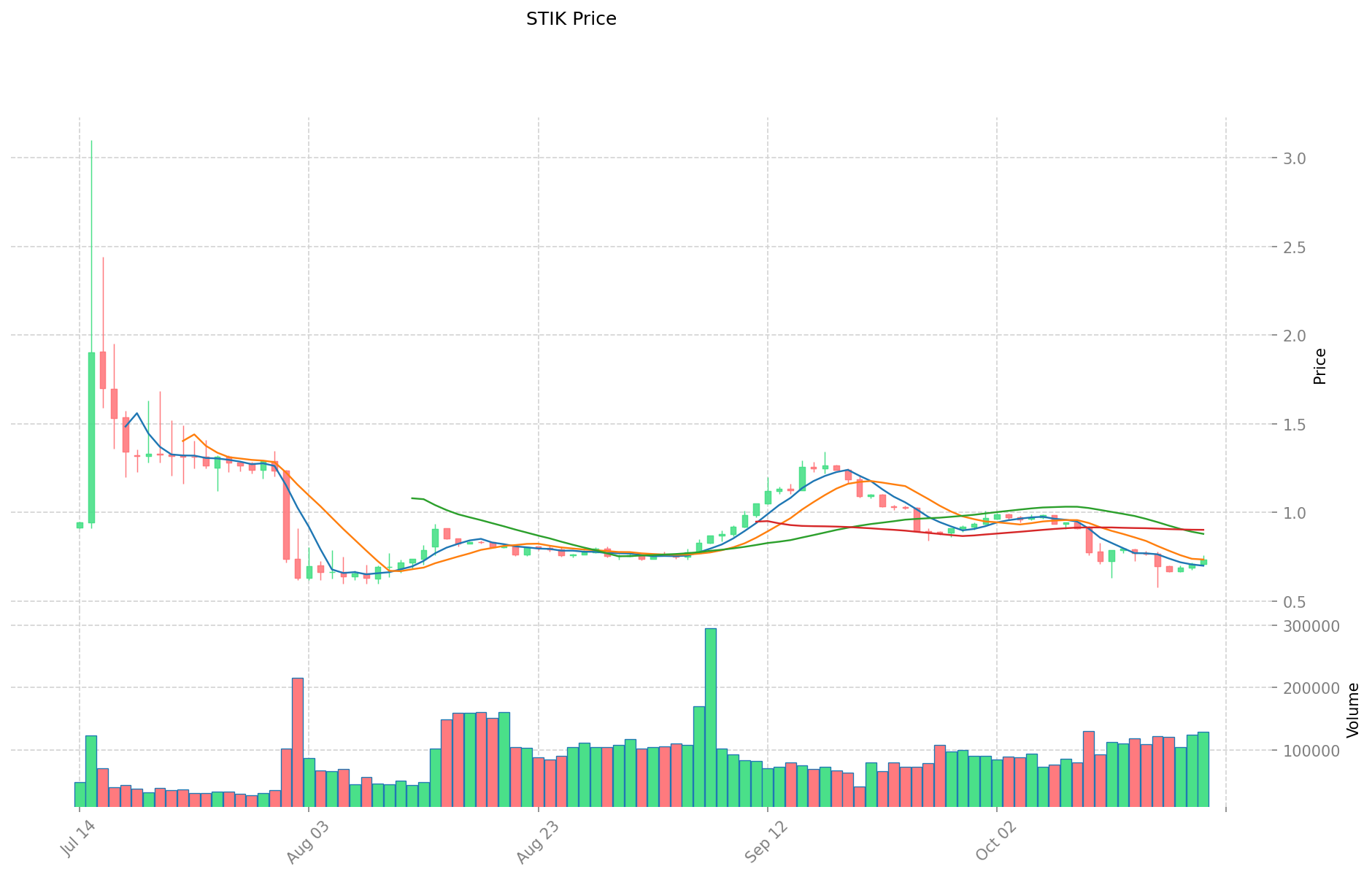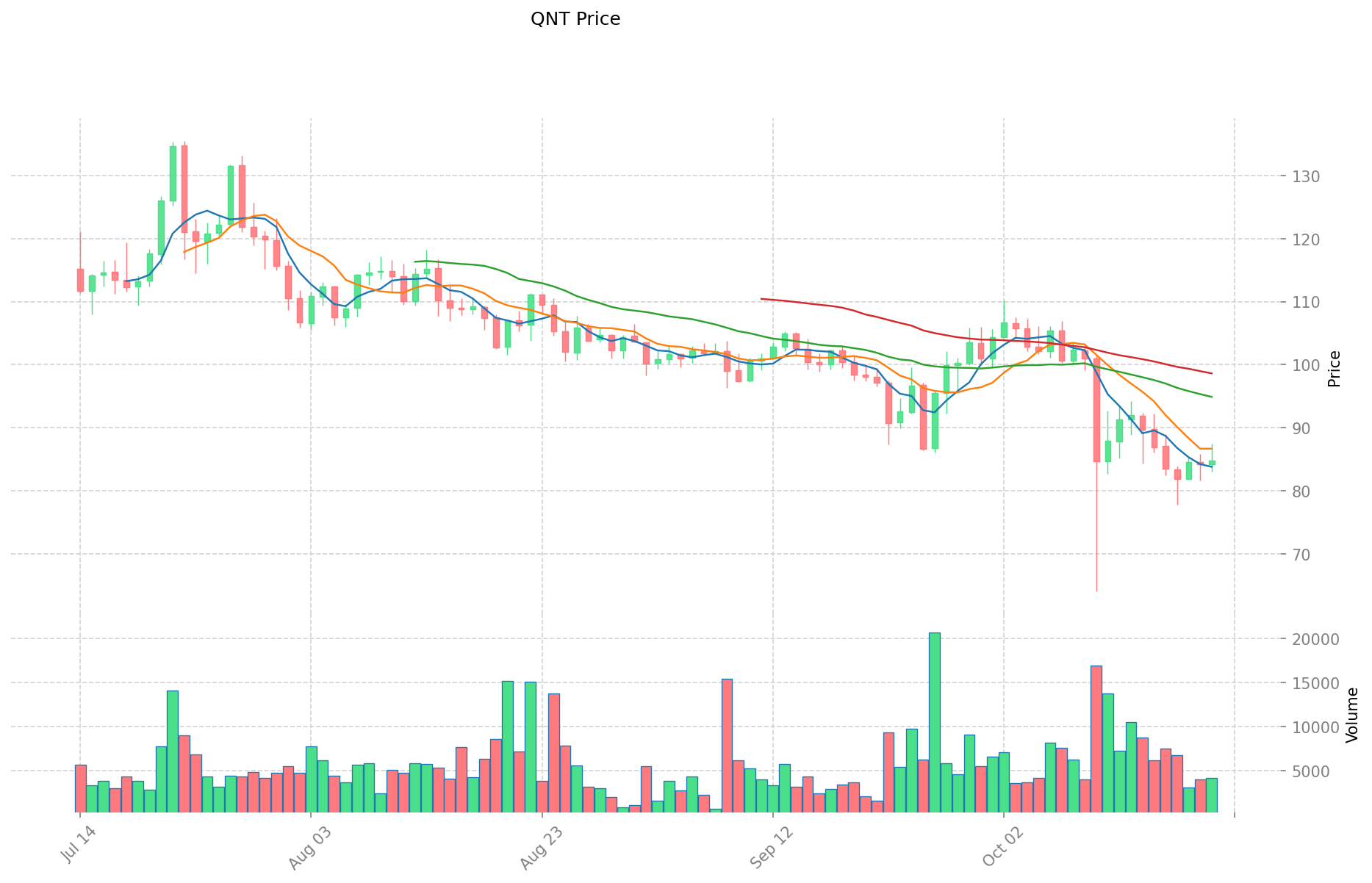STIK vs QNT: Comparing Two Leading Blockchain Interoperability Solutions
Introduction: STIK vs QNT Investment Comparison
In the cryptocurrency market, Staika vs Quant comparison has always been a topic that investors can't avoid. The two not only have significant differences in market cap ranking, application scenarios, and price performance, but also represent different positioning of crypto assets.
Staika (STIK): Since its launch, it has gained market recognition for its multi-list cryptocurrency wallet and Move To Earn and Play To Earn services.
Quant (QNT): Since its inception in 2018, it has been hailed as a technology provider enabling trusted digital interaction, recognized for solving interoperability through the creation of a global blockchain operating system, Overledger.
This article will comprehensively analyze the investment value comparison between STIK and QNT, focusing on historical price trends, supply mechanisms, institutional adoption, technical ecosystems, and future predictions, and attempt to answer the question investors care about most:
"Which is the better buy right now?"
I. Price History Comparison and Current Market Status
STIK (Coin A) and QNT (Coin B) Historical Price Trends
- 2023: STIK launched at $0.25, marking the start of its market journey.
- 2021: QNT reached its all-time high of $427.42, driven by increased adoption of its interoperability solutions.
- Comparative Analysis: In recent market cycles, STIK rose from its launch price of $0.25 to a high of $5.6, while QNT has shown more established price patterns with significant volatility.
Current Market Situation (2025-10-21)
- STIK current price: $0.7339
- QNT current price: $84.8
- 24-hour trading volume: STIK $92,962.42 vs QNT $391,435.99
- Market Sentiment Index (Fear & Greed Index): 29 (Fear)
Click to view real-time prices:
- Check STIK current price Market Price
- Check QNT current price Market Price


II. Key Factors Affecting STIK vs QNT Investment Value
Supply Mechanism Comparison (Tokenomics)
- Market demand: Investment value is significantly influenced by market demand and adoption rates
- Project development: The development trajectory of each cryptocurrency affects investor confidence
- Community support: Strong community backing enhances sustainability and growth potential
- 📌 Historical pattern: High liquidity tends to positively correlate with investment stability
Institutional Adoption and Market Applications
- Market sentiment: Investor confidence directly impacts price movements
- Adoption rates: Widespread adoption or major technological breakthroughs positively affect value
- Regulatory environment: Clear and supportive regulatory policies strengthen investor confidence
- Market volatility: Price fluctuations are common in cryptocurrency investments
Technical Development and Ecosystem Building
- Liquidity factors: Even in low liquidity environments, profitable trading opportunities exist
- Smart money tracking: Following strategic investors rather than chain scanning can yield better results
- Innovation trajectory: Technical breakthroughs and unique use cases enhance long-term value
Macroeconomic Factors and Market Cycles
- Economic growth correlation: Proximity to capital, resources, and power influences investment outcomes
- Regulatory developments: Government policies toward cryptocurrencies impact their acceptance and value
- Market structure changes: Competitive dynamics can shift rapidly, affecting market dominance
III. Price Prediction for 2025-2030: STIK vs QNT
Short-term Prediction (2025)
- STIK: Conservative $0.67528 - $0.734 | Optimistic $0.734 - $0.99824
- QNT: Conservative $76.365 - $84.85 | Optimistic $84.85 - $126.4265
Mid-term Prediction (2027)
- STIK may enter a growth phase, with expected prices ranging from $0.906307968 to $1.000715048
- QNT may enter a bullish market, with expected prices ranging from $86.3751151125 to $136.6694859375
- Key drivers: Institutional fund inflows, ETF, ecosystem development
Long-term Prediction (2030)
- STIK: Base scenario $1.106340049281 - $1.4382420640653 | Optimistic scenario $1.4382420640653+
- QNT: Base scenario $152.141838440484375 - $178.005950975366718 | Optimistic scenario $178.005950975366718+
Disclaimer
STIK:
| 年份 | 预测最高价 | 预测平均价格 | 预测最低价 | 涨跌幅 |
|---|---|---|---|---|
| 2025 | 0.99824 | 0.734 | 0.67528 | 0 |
| 2026 | 1.0220216 | 0.86612 | 0.5543168 | 18 |
| 2027 | 1.000715048 | 0.9440708 | 0.906307968 | 28 |
| 2028 | 1.18631936728 | 0.972392924 | 0.52509217896 | 32 |
| 2029 | 1.133323952922 | 1.07935614564 | 0.6044394415584 | 47 |
| 2030 | 1.4382420640653 | 1.106340049281 | 1.03995964632414 | 50 |
QNT:
| 年份 | 预测最高价 | 预测平均价格 | 预测最低价 | 涨跌幅 |
|---|---|---|---|---|
| 2025 | 126.4265 | 84.85 | 76.365 | 0 |
| 2026 | 113.0329275 | 105.63825 | 53.8755075 | 24 |
| 2027 | 136.6694859375 | 109.33558875 | 86.3751151125 | 28 |
| 2028 | 157.4432478 | 123.00253734375 | 83.64172539375 | 45 |
| 2029 | 164.06078430909375 | 140.222892571875 | 133.21174794328125 | 65 |
| 2030 | 178.005950975366718 | 152.141838440484375 | 108.020705292743906 | 79 |
IV. Investment Strategy Comparison: STIK vs QNT
Long-term vs Short-term Investment Strategies
- STIK: Suitable for investors focused on Move-to-Earn and Play-to-Earn ecosystems
- QNT: Suitable for investors seeking interoperability solutions and enterprise blockchain adoption
Risk Management and Asset Allocation
- Conservative investors: STIK: 30% vs QNT: 70%
- Aggressive investors: STIK: 60% vs QNT: 40%
- Hedging tools: Stablecoin allocation, options, cross-currency portfolios
V. Potential Risk Comparison
Market Risks
- STIK: Newer to the market, potentially higher volatility
- QNT: Established history, but subject to broader market trends
Technical Risks
- STIK: Scalability, network stability
- QNT: Centralization concerns, potential security vulnerabilities
Regulatory Risks
- Global regulatory policies may impact both differently, with QNT potentially facing more scrutiny due to its enterprise focus
VI. Conclusion: Which Is the Better Buy?
📌 Investment Value Summary:
- STIK advantages: Growing ecosystem, potential for rapid growth in Move-to-Earn and Play-to-Earn sectors
- QNT advantages: Established interoperability solutions, enterprise adoption, longer market presence
✅ Investment Advice:
- Novice investors: Consider a balanced approach with a slight preference for QNT due to its established history
- Experienced investors: Explore opportunities in both, with a higher allocation to STIK for potential growth
- Institutional investors: Focus on QNT for its enterprise solutions and established market presence
⚠️ Risk Warning: The cryptocurrency market is highly volatile. This article does not constitute investment advice. None
VII. FAQ
Q1: What are the main differences between STIK and QNT? A: STIK is focused on multi-list cryptocurrency wallets and Move To Earn/Play To Earn services, while QNT is known for its interoperability solutions through the Overledger blockchain operating system. STIK is newer to the market, while QNT has been around since 2018.
Q2: Which coin has shown better price performance historically? A: QNT has shown more established price patterns with significant volatility, reaching an all-time high of $427.42 in 2021. STIK, being newer, has risen from its launch price of $0.25 to a high of $5.6.
Q3: What are the current prices and trading volumes for STIK and QNT? A: As of 2025-10-21, STIK's price is $0.7339 with a 24-hour trading volume of $92,962.42. QNT's price is $84.8 with a 24-hour trading volume of $391,435.99.
Q4: How do the long-term price predictions compare for STIK and QNT? A: For 2030, STIK's base scenario prediction ranges from $1.106340049281 to $1.4382420640653, while QNT's base scenario ranges from $152.141838440484375 to $178.005950975366718.
Q5: What are the main risk factors for investing in STIK and QNT? A: STIK faces risks related to market volatility, scalability, and network stability. QNT's risks include potential centralization concerns, security vulnerabilities, and increased regulatory scrutiny due to its enterprise focus.
Q6: How should different types of investors approach STIK and QNT investments? A: Novice investors might consider a balanced approach with a slight preference for QNT. Experienced investors could explore opportunities in both, with a higher allocation to STIK for potential growth. Institutional investors might focus more on QNT for its enterprise solutions and established market presence.
Q7: What factors should be considered when deciding between STIK and QNT investments? A: Investors should consider market demand, project development, community support, institutional adoption, technical ecosystems, regulatory environment, and overall market conditions. Personal investment goals, risk tolerance, and investment horizon are also crucial factors in decision-making.
Share
Content